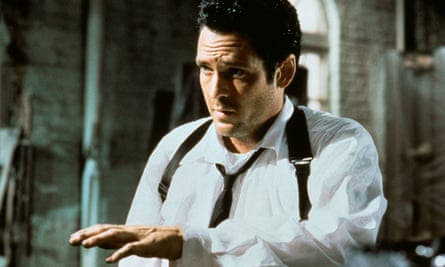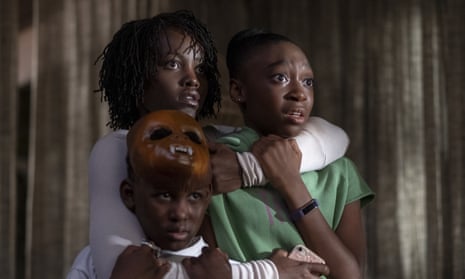Ever since the first trailer for Jordan Peele’s Us was released, it was clear that music would be an essential part of the film. Who knew Luniz’s I Got Five on It could elicit such unsettling emotions? Peele did, and he managed to transform this chilled-out party tune into a sinister symphonic trigger-warning telling us bad things are about to go down.
Then there’s the Beach Boys’ Good Vibrations, which is played during a particularly violent scene. The thrumming melody that would normally fill you with joy and calm suddenly becomes a claustrophobic din as you watch people brutally murdered in their own home. The lyrics – “I’m pickin’ up good vibrations” – are jarringly at odds with the images on screen; nothing is good about this situation and the music hits that home.
Peele could have used an ominous score to underline this violent scene: the audience would know what to expect when the dark chords chimed in and would brace themselves for violence. With Good Vibrations, expectations are subverted, horror is heightened.

Peele isn’t the first film-maker to pair jaunty pop songs with uber violence. One of the most famous such examples occurs in Stanley Kubrick’s A Clockwork Orange, when juvenile delinquent Alex and his cronies break into a couple’s house to attack the man and rape his wife. All the while, Alex is performing an a capella rendition of Singin’ in the Rain – a joyful musical number whose meaning is twisted when sung by a sadistic sociopath. With every line, themes of love and happiness are destroyed, making the scene all the more uncomfortable and disturbing.
Mary Harron’s adaptation of American Psycho uses its protagonist’s murderous tendencies to lampoon the consumerist lifestyle of 80s yuppies – and never more brilliantly than the scene featuring Huey Lewis and the News. The upbeat melody of Hip to Be Square lingers in the background as Patrick Bateman delivers a critique of the band to an unsuspecting colleague before butchering him with an axe. The switch from mundane monologuing to brutal murder is made all the more harsh by the song’s playful tones.
And who can forget Quentin Tarantino’s use of Stealers Wheel in Reservoir Dogs? Having taken a police officer prisoner, Michael Madsen’s psychotic Mr Blonde switches on the radio and Stuck in the Middle With You comes on. Madsen cheerily dances to the 1974 hit before taking out a razor to torture a man for whom the song’s lyrics are all too literal.

Thanks to the dissonant soundtracks, these scenes are arguably the most effective of each movie. They stick in the mind and you’re reminded of these violent acts every time you hear the song. What Kubrick, Harron and Tarantino have done for Singin’ in the Rain, Hip to Be Square and Stuck in the Middle With You, Peele has done for I Got Five on It and Good Vibrations: they are no longer breezy pop songs but horror anthems. Be careful next time you put on your headphones.

Comments (…)
Sign in or create your Guardian account to join the discussion